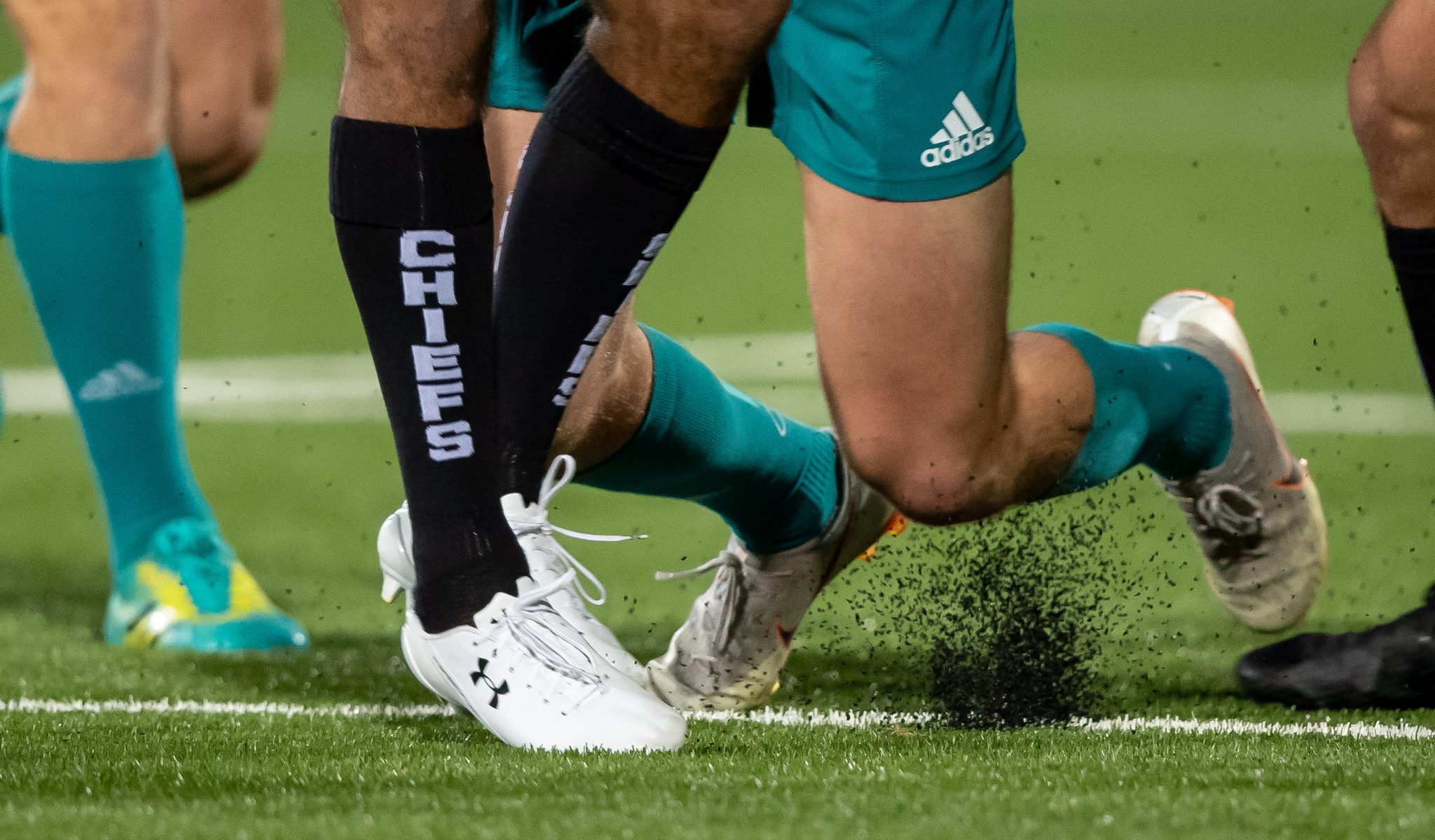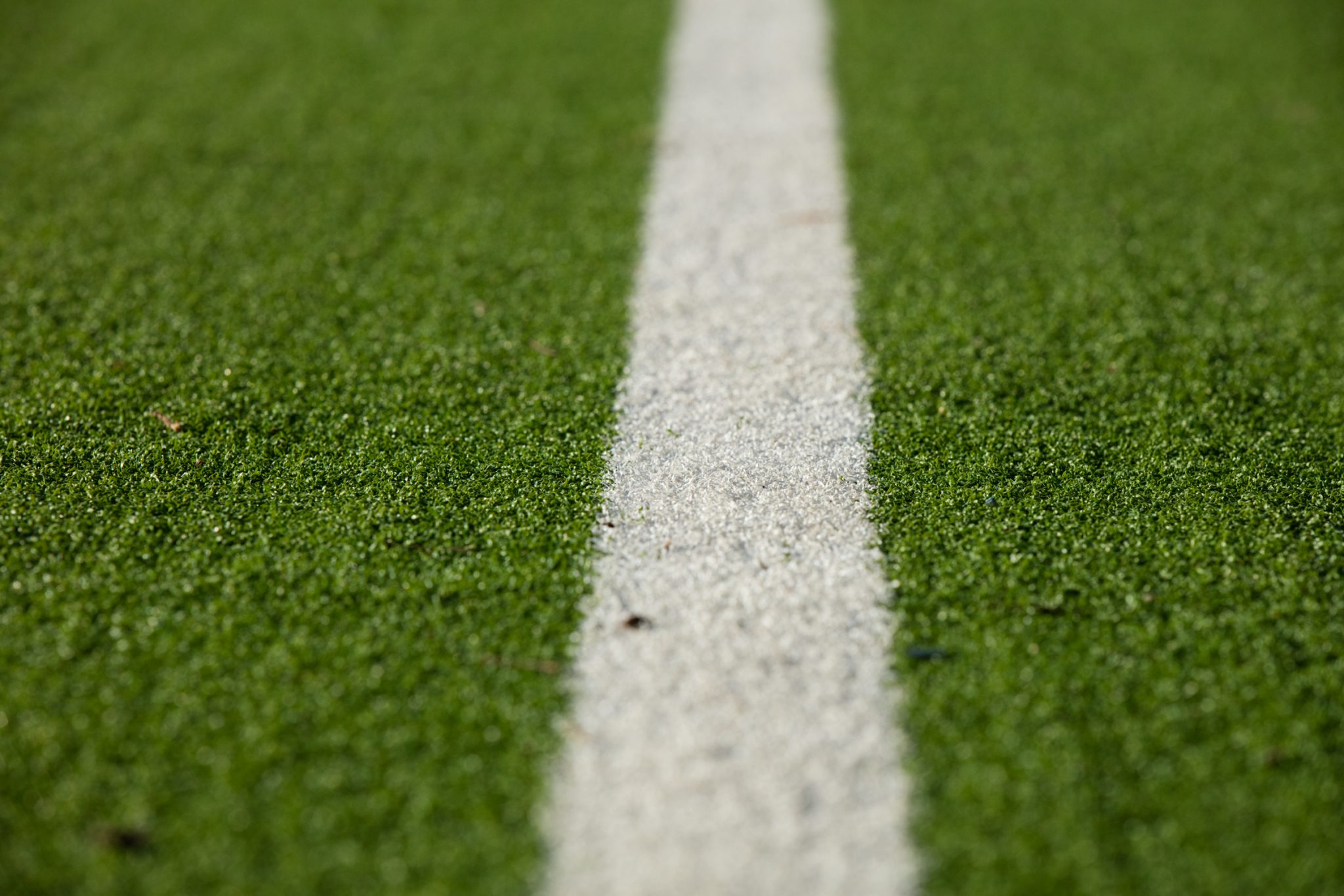The Importance of Infill
- 09/23/2020
To start on a positive note, when most synthetic turf pitches are properly installed and maintained, the infill is working as it was designed to. But, is yours?
New pitches fall into 4 categories –
- no infill
- fully sanded
- partially sanded
- infilled with sand and rubber
It shouldn’t be possible to see infill on any surface. Synthetic turf pitches are meant to be green, however there are occasions when this is not the case.
Keary’s Renault Series, Irish Independent Park, Cork 24/8/2018 Munster vs Exeter Chiefs Mandatory Credit ©INPHO/Morgan Treacy
Sand filled pitches
Manufacturers will recommend that the sand is topped up to within 3mm of the top of the fibres. This is because the sand is designed to support the fibres and keep them upright, so the fibres offer the consistency required for ball roll and bounce. Lighter surfaces (below 1000g per sqm faceweight) may appear to be too sandy and are a cheap option. Poor initial installation often sees excessive sand left on the surface. And even worse, there are maintenance companies, which add more sand to the surface at a price, and then charge you for regularly distributing it around the pitch. This is a con. Sand should be below the fibre tops and players should play on a green surface. Just think of that sand trapped between your foot and the fibres. Every movement causes abrasion to the fibre, just like sandpaper, and very soon your surface is wearing away quicker than it should. Get that sand of the top.
Sand dressed pitches
As it says, the surface is dressed with the sand, and should never be seen. In fact visually these type of pitches should resemble a non infilled product. The importance of the infill is to support and add volume within the fibres. The skills during installation to ensure even distribution of sand should not be underestimated. Always check what equipment is being used to ensure this happens, otherwise you will be left with a variable pitch, with faster ball roll in over-sanded areas and slower where sand is sparse. And then make sure that the maintenance regime followed is effective, and decompaction occurs regularly.
Sand and rubber pitches (3G)
Once again you should never see rubber anywhere near the playing surface of a pitch, not even when it is first installed. Ensure the sand levels are correct when first applied, before rubber is added. The sand supports the base of the system. Ask what equipment will be used to regulate infill heights. The same applies when adding the rubber layer, which aids performance and feel. This should be achieved in layers, each to the regulated height until the correct infill height is reached. Some settlement is achieved through surface brushing, leaving the desired length of fibre exposed above the infill. Maintenance should be aimed at decompacting the infill, but also ensuring that rubber loosened is returned to within the fibres.
Gravesham sand dress pitch
Getting the infill right in the first place and keeping it that way offers you the best chance to ensure your synthetic surface will play to its best for a long time.





